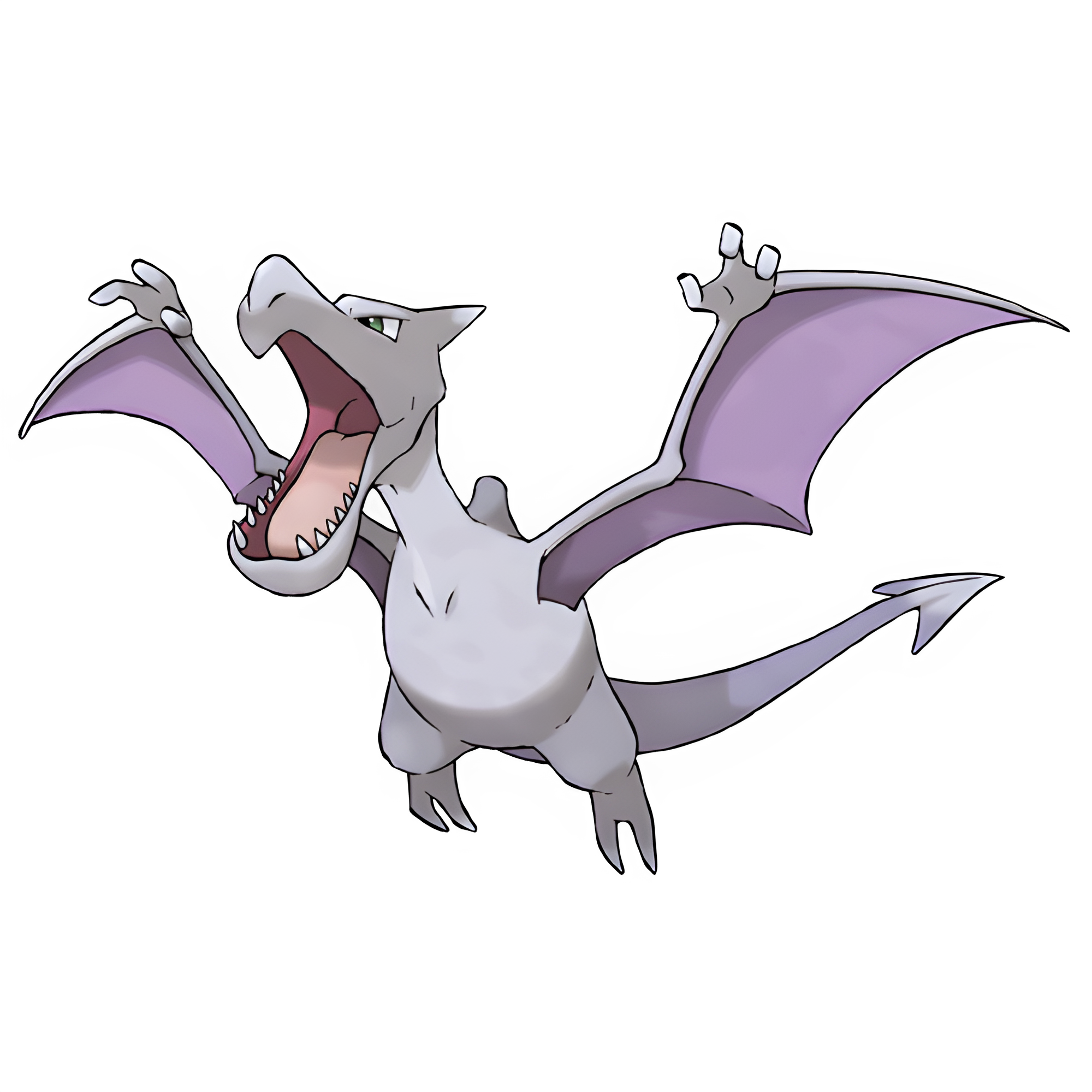Facts for Kids
Aerodactyl is a prehistoric Rock/Flying type Pokémon known for its sharp features and impressive speed, originating from fossilized remains.
Overview
Fossil Significance
Evolutionary History
Role In Popular Culture
Habitat And Distribution
Physical Characteristics
Diet And Feeding Behavior
Behavior And Social Structure
Comparative Analysis With Other Pokémon

Inside this Article
Charizard
Dinosaur
Spearow
Pokémon
Science
Spirit
People
Season
Fossil
Did you know?
🦖 Aerodactyl is known as the Fossil Pokémon.
🧗♂️ It was introduced in Generation I of Pokémon.
⚡ Aerodactyl is a Rock/Flying type Pokémon.
🥋 It has a base stat total of 600, making it a strong contender in battles.
🌌 Aerodactyl is capable of Mega Evolution, becoming Mega Aerodactyl.
🏃 Aerodactyl can learn a variety of moves, including both physical and special attacks.
🦅 Its wings can measure up to 18 feet, making it one of the largest Pokémon!
💨 Aerodactyl has high speed stats, allowing it to outspeed many opponents.
🔍 It is said to have lived during the age of the dinosaurs, over 100 million years ago.
🐦 Aerodactyl's strong, beak-like mouth is filled with sharp teeth, emphasizing its predatory nature.
Introduction
♂️✨
Fossil Significance
What an exciting connection between the Pokémon world and our own!
Evolutionary History
Its relatives, the Pterosaurs, are believed to have flown high in the skies when dinosaurs roamed the earth!
Role In Popular Culture
♂️ Besides movies, Aerodactyl appears in Pokémon trading cards and many games where trainers catch and battle with it. Kids around the world love Aerodactyl for its adventurous spirit!
Habitat And Distribution
️♂️🔍 It was discovered from fossils in the world of Pokémon, specifically in the Kanto region. The Kanto region is a place based on real-life Japan, and you can find it in Pokémon games. While Aerodactyl was more common during the prehistoric times, today, it can be revived from fossils found in places like the Pewter Museum of Science! 🦕
Each Aerodactyl loves to fly in rocky areas where it can soar high!
Physical Characteristics
Also, it has a long tail that helps it steer while soaring through the skies. Many people think Aerodactyl looks scary, but it's really just a strong Pokémon trying to fly!
Diet And Feeding Behavior
️ A fun fact is that Aerodactyl can also eat fruits and seeds if it needs to. Just like many birds, it's a skilled hunter and knows when to attack!
Behavior And Social Structure
️ When it finds a place to call home, it protects it fiercely. Aerodactyl often prefers to be alone, but they can be seen flying with others during their mating season. 🦅
Although they fly solo, Aerodactyls communicate with each other using special calls. When they spot danger, they let out a loud screech to warn their fellow Pokémon! It’s a way of keeping their friends safe.

